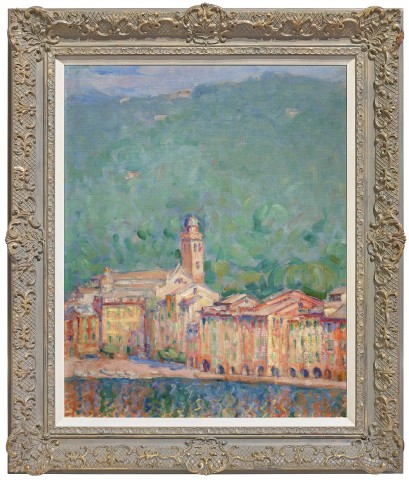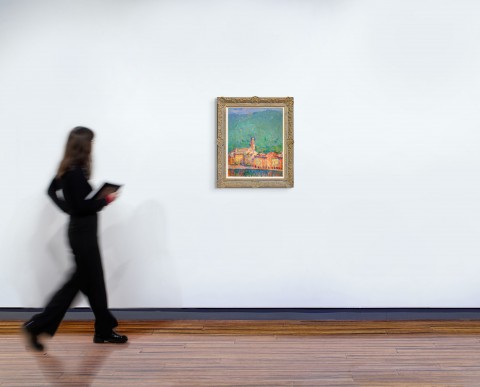PORTOFINO, c.1914
JOHN PETER RUSSELL
oil on canvas on plywood
59.5 x 48.0 cm
Estate of the artist
Thence by descent
Caroline Russell (née de Witt Merrill), the artist’s widow
Mrs John W. Kessler, Illinois, USA, the artist’s niece, a gift from the above
Thence by descent
Ken Kessler, USA, the artist’s great-nephew
Christie’s, London, 19 March 2020, lot 4
Private collection, Sydney, acquired from the above
Galbally, A., The Art of John Peter Russell, Melbourne, 1977, cat. 260, p. 112 (as ‘Untitled (View of Portofino)’)
Coslovich, G., ‘Amid shutdowns, Christie’s offers Australian art rarities’, Australian
Financial Review, 18 March 2020 (illus.)
Portofino, 1920, oil on canvas on board, 50.0 x 58.0 cm, private collection
Portofino, 1911, watercolour and pencil, 27.0 x 37.2 cm, in the collection of the National Gallery of Victoria, Melbourne
Portofino, 1920, watercolour and gouache, 26.8 x 37.9 cm, in the collection of the National Gallery of Australia, Canberra
Portofino Harbour, 1920, watercolour and charcoal, 28.3 x 38.4 cm, in the collection of the Queensland Art Gallery | Gallery of Modern Art, Brisbane
John Peter Russell-Sup-Portofino cmyk.jpg
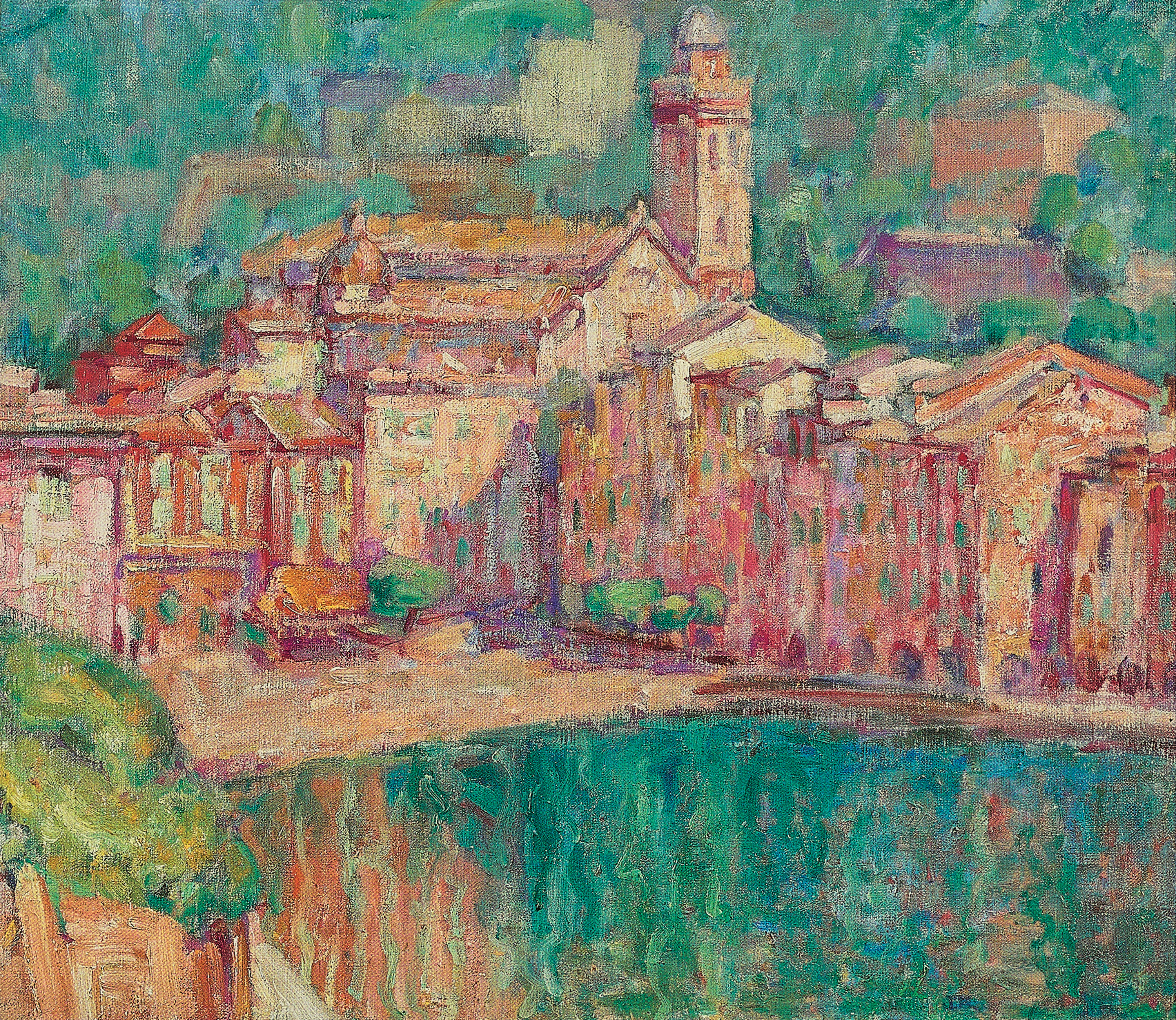
John Russell’s inherited wealth afforded many freedoms, setting him on a unique path unlike that of any other Australian artist of the time and bringing him into direct contact with some of the masters of European Impressionism and Post-Impressionism. No longer expected to join the family business following the death of his father, he sailed to England in 1880, enrolling at London’s Slade School the following year. Continuing his studies at Fernand Cormon’s atelier in Paris in the mid-1880s, he worked alongside Émile Bernard, Henri de Toulouse-Lautrec and later, Vincent van Gogh, with whom he established an enduring friendship.1
His first experience of Belle-Île, one of a group of islands off the coast of Brittany, in the summer of 1886, represented both a professional and personal breakthrough. During an extended stay on the island, Russell met and befriended Claude Monet who he saw working en plein air and, recognising his painting style, famously introduced himself by asking if was indeed ‘the Prince of the Impressionists’. Surely flattered, Monet, who was eighteen years Russell’s senior, took a liking to the young Australian and uncharacteristically allowed him to watch him work and on occasion, to paint alongside him. This experience provided Russell with an extraordinary insight into the techniques and working method of one of the founders of the Impressionist movement and its influence was both significant and immediate.
250134 JPR-(cleaned) cmyk.jpg

The paintings Russell later made in Italy and Sicily show him working in a new style, using a high-keyed palette that omitted black entirely, and his compositions made up of strokes of pure colour.2 In addition to showing him how to use colour as a means of expressing a personal response to the subject, Monet’s example also highlighted for Russell the importance of working directly from nature.3
Russell responded to the wild, isolated beauty of Belle-Île and in 1887 bought land overlooking the inlet of Goulphar, writing to his friend, Tom Roberts, ‘I am about to build a house in France. Settle down for some five years. Get some work done. It will be in some out of the way corner as much a desert as possible.’4 Known as Château de l’Anglais (or Château de Goulphar), the house was well-appointed with a large studio, workshop and expansive garden. Russell and his Italian-born wife, Marianna, lived there for many years, raising a large family, the island and surrounding ocean providing a constant source of inspiration for his art. ‘The colours completely bowl me over. On some days here it’s ravishing but impossible for my poor palette.’5
250134 monet for JPR-(cleaned up).jpg
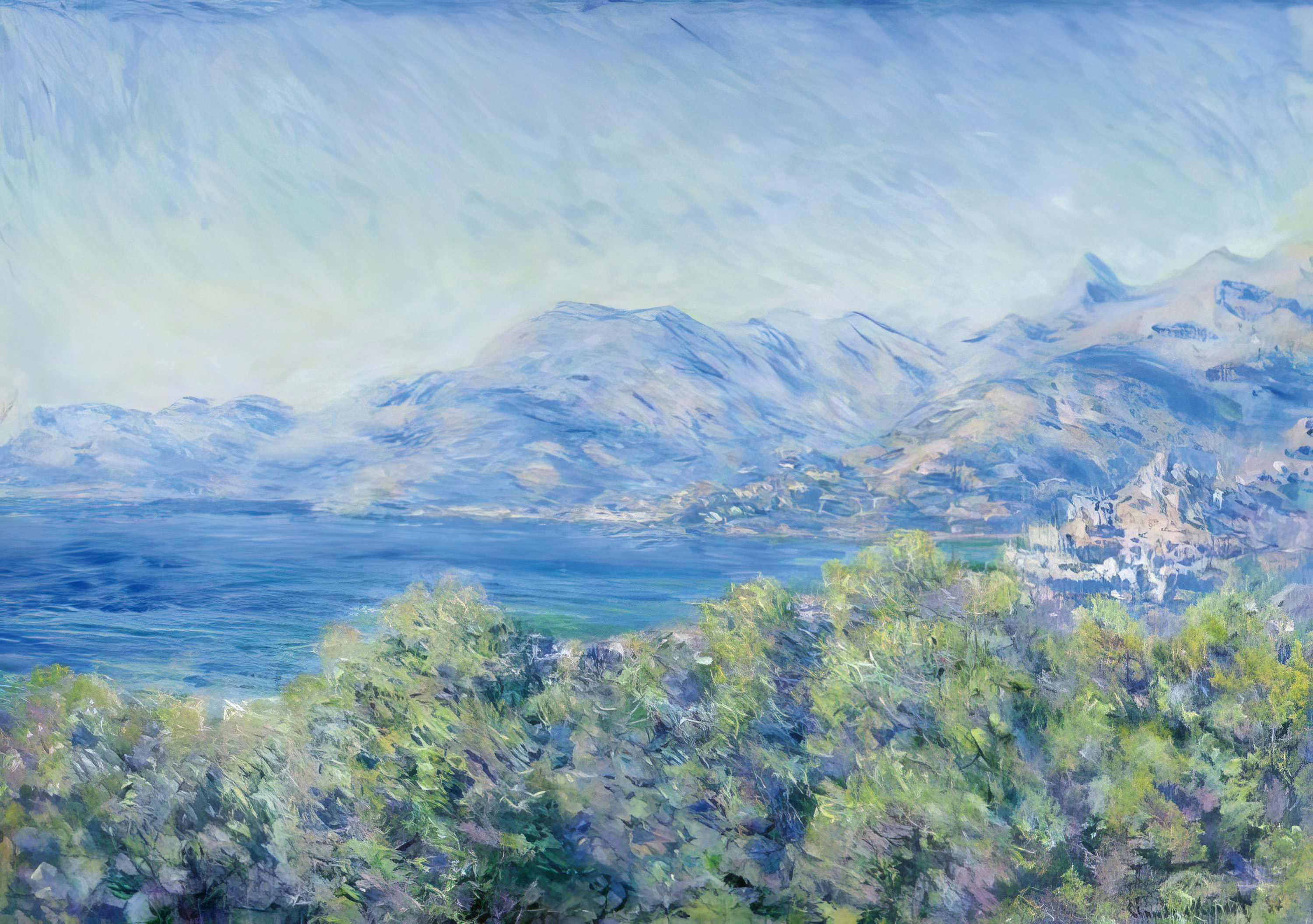
It was Marianna’s premature death in 1908 that prompted Russell to leave Belle-Île and for the next two years he travelled in Europe, marrying Caroline de Witt Merrill, an American-born singer known as ‘Felize’ (and a friend of his daughter Jeanne’s) in 1912. Russell had visited Portofino on the Ligurian coast in late 1908, returning with his new wife in 1914 and again, after the war, in 1920. The beauty of the town, with its sixteenth-century fortress perched high on the hilltop and distinctive pastel-coloured houses bathed in bright Mediterranean light, obviously appealed to the colourist in Russell, who painted various views in oil and watercolour. Monet had visited the region in the 1880s, staying in the nearby coastal town of Bordighera and further inland at Dolceacqua, and as works such as Strada Romana at Bordighera, 1884 (Museum Barberini, Potsdam) demonstrate, he too was dazzled by the beauty and glorious colours of the area.
Russell worked in oil only occasionally after 1908, his preference increasingly being for the immediacy of watercolour which enabled him ‘to capture and hold the intensity of the colours of nature’.6 His deft handling of the medium is clear in Portofino, 1911 (National Gallery of Victoria) which depicts the piazza in front of Portofino Bay – showing the Church of St Giorgio with its distinctive tower in the background and the multi-storey buildings stepping up the hillside on the right – in delicately luminous tones. It was evidently a view that captivated Russell who repeated it in at least two paintings, continuing a practice that was familiar to his work – and indeed, to that of Monet – of revisiting the same subject at different times (of the day, season, year) and recording chromatic and atmospheric variations. With ‘the true impressionism in the tradition of Monet, [he] caught and held the fleeting moment of sunshine and shadow and pinned it down, light as a butterfly, for all time.’7
250134.jpg
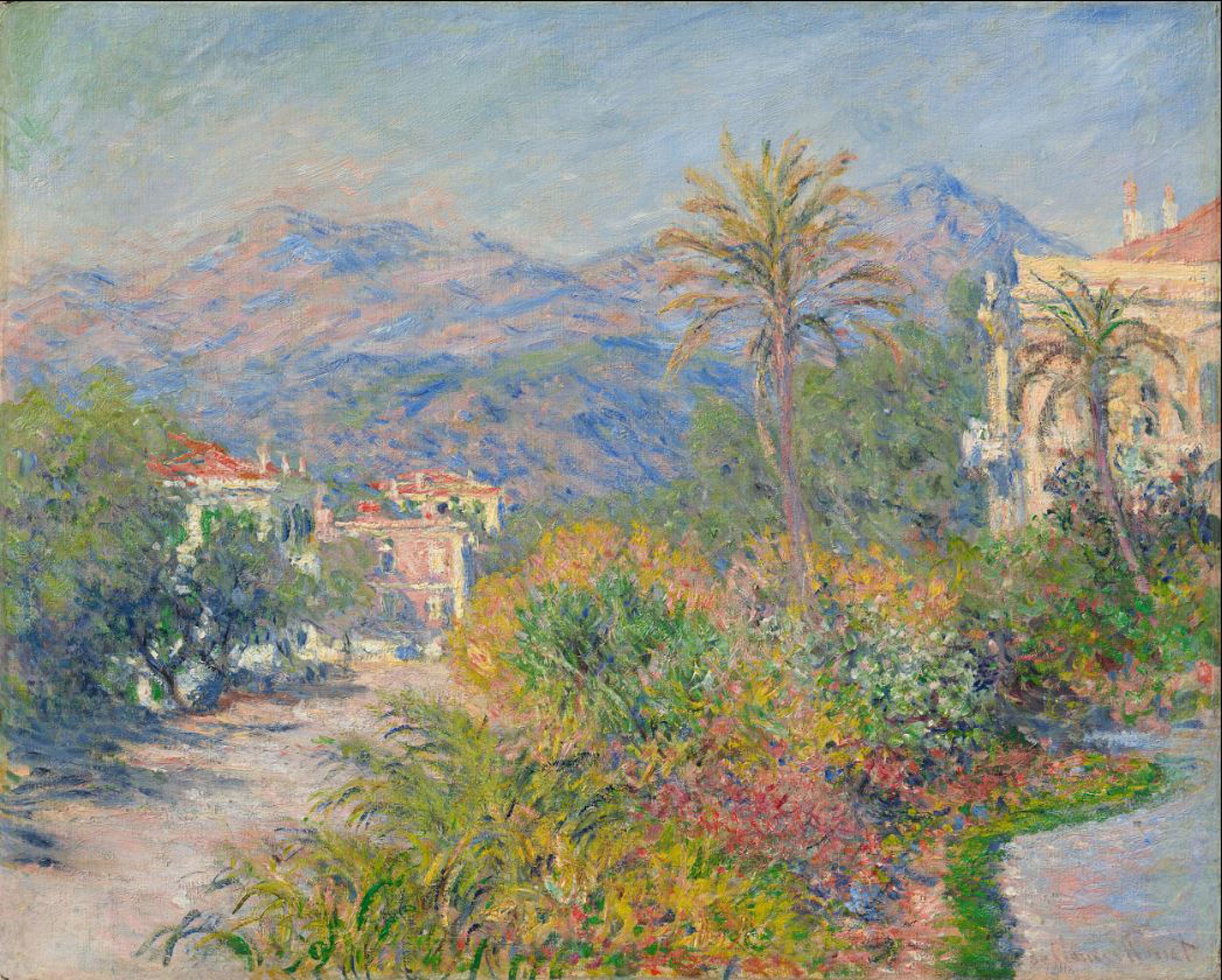
While one of these Portofino oils adopts a more distant viewpoint, featuring a large area of the bay in the foreground, the current painting from circa 1914 zooms in and hovers over the water, dividing the scene into a series of horizontal bands. The church and adjacent buildings make up the central band and while tones of pink and orange prevail, it appears as if Russell has brought the entirety of his palette to bear with a rainbow of coloured brushstrokes used to define the details of the architecture. In turn, this colour is reflected in the bay which is described in lively squiggles of paint that are built up in individual brushstrokes to suggest the rhythmic movement of the water. Russell varies the application of paint in his pictures according to the subject and the top band of the painting is the simplest, using less prominent brushstrokes and a more limited colour palette of greens and blues with occasional highlights to describe the hillside beyond the piazza and a glimpse of sky above. Russell’s brilliance as a colourist is on full display in this painting, as is his ability to communicate as much about being in a particular place as its physical and geographical features.
Correspondence documents the provenance of this painting which, upon Russell’s death in 1930 was inherited by his wife, passing by descent to her sister Florence and then to her son, Ken Kessler. This and other works held by the family were rarely, if at all exhibited, and it has only been in more recent years that they have been more widely seen, adding immeasurably to our understanding of Russell’s remarkable oeuvre.
1. Although Russell did not see van Gogh again after he departed for Arles in the south of Frances in early 1888, their friendship continued via correspondence: see Galbally, A., A remarkable Friendship: Vincent van Gogh and John Peter Russell, The Miegunyah Press, Carlton, 2008
2. Taylor, E., ‘John Russell and friends: Roberts, Monet, van Gogh, Matisse, Rodin’, Australian Impressionists in France, National Gallery of Victoria, Melbourne, 2013, p. 60
3. ibid.
4. Letter from John Peter Russell to Tom Roberts, 5 October 1887, cited in Tunnicliffe, W., (ed.), John Russell: Australia’s French Impressionist, Art Gallery of New South Wales, Sydney, 2018, p. 193
5. Russell to Auguste Rodin, April – May 1890, cited in Prunster, U., ‘Painting Belle-Île’, Prunster, U. et al., Belle-Île: Monet, Russell and Matisse, Art Gallery of New South Wales, Sydney, 2001, p. 46
6. Galbally, A., The Art of John Peter Russell, Sun Books, Melbourne, 1977, p. 77
7. Ursula Hoff, cited in Salter, E., ‘The Lost Impressionist: A biography of John Peter Russell, Angus and Robertson, London, 1976, p. 179
KIRSTY GRANT

